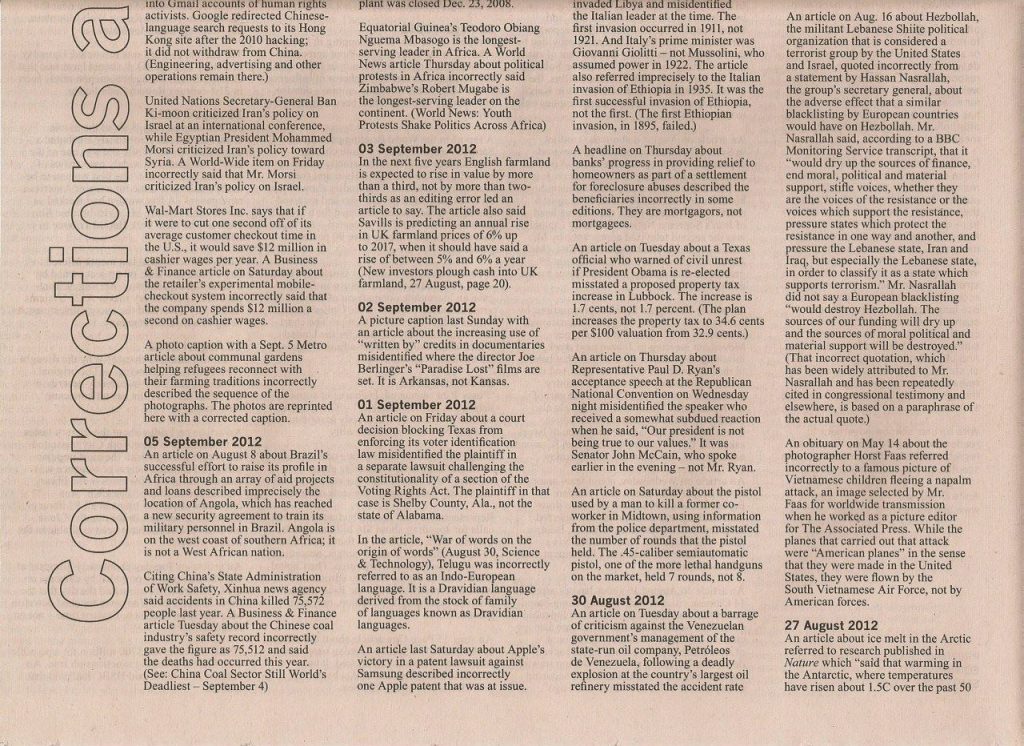Anita Di Bianco, Corrections & Clarifications; collectorspace
collectorspace presents Banu Cennetoğlu’s BAS Collection with Corrections and Clarifications by Anita Di Bianco, an ongoing newspaper project produced in various locations, languages, and formats since 2001. Each iteration of the work is an edited compilation of corrections of typographical or factual mistakes, and statements intended to clear up misunderstandings published in daily newspapers. Corrections and Clarifications takes the familiar format of the daily newspaper, its content referring back to what was published the day, week, or month before.
Di Bianco leaves out the original journalistic material, offering an indirect record of idiosyncratic as well as systematic errors that infiltrate and alter the daily information flow. The project hints at particular power relations in print journalism, in which facts and meanings are constantly negotiated between the producers and consumers of information. Each edition, ranging from 500 to 5,000 copies, is distributed gratis within the context of an exhibition, and is meant to be read, passed along, discarded, or discovered inadvertently.
Di Bianco’s work is ‘non-precious’, reflecting the overarching sensibility of the BAS Collection that focuses on artists’ books and printed matter as artworks. To develop the collection, Cennetoğlu emphasizes diversity—rather than personal taste—and has an open acquisition policy when buying, accepting, and bartering works. The collection is accessible to the public, aiming to engage the visitors through the print medium that is produced in large editions and circulating outside of mainstream art channels.
“Anita Di Bianco’s Corrections and Clarifications (2001–ongoing), is a work that reflects the overarching sensibilities of BAS. Di Bianco’s work mimics the familiar format of the daily newspaper and yet leaves out the original journalistic material. This idiosyncratic newspaper features corrections of typographical or factual mistakes and statements intended to clear up misunderstandings published in daily newspapers.
The work is printed in multiple editions—ranging from 500 to 5,000 copies—, distributed gratis, and meant to be passed along, discarded, or discovered inadvertently.”


